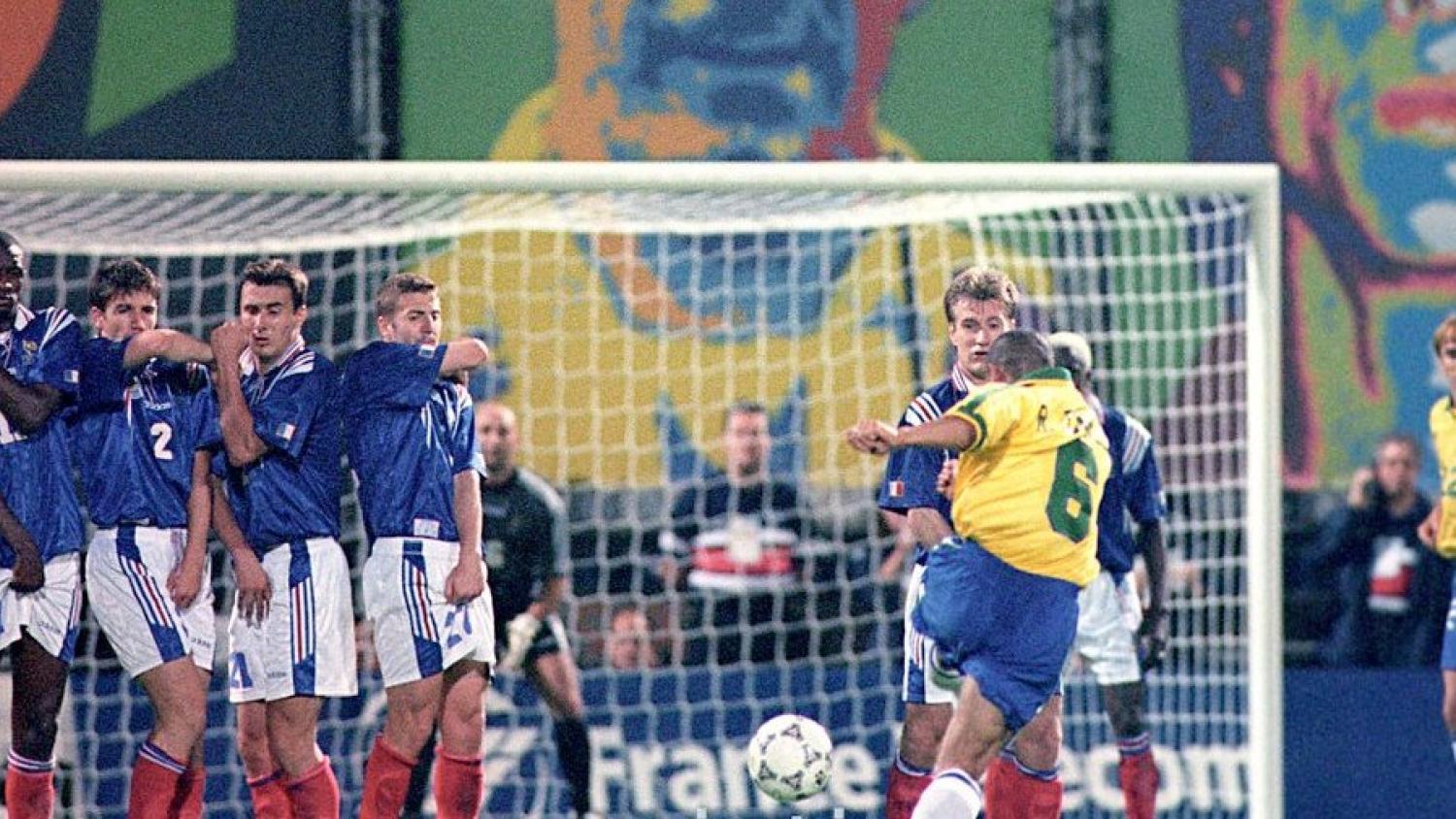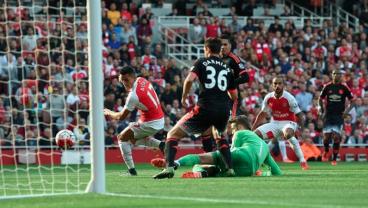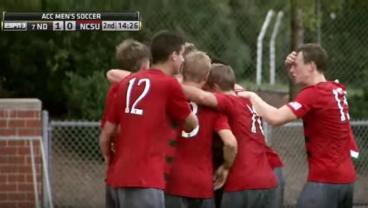The year 1997 saw many changes in the world. Bill Clinton was sworn in for a second term, the Teletubbies debuted in England and NASA landed its first space probe on Mars.
The year was big in the soccer world too.
Here are 10 amazing things that happened in soccer in 1997.
At the age of 17, Rafael Márquez made his first appearance for the Mexican national team in a friendly against Ecuador on February 5, 1997 at the Azteca. Márquez’s call-up was actually a mistake. Mexico coach Bora Milutinovic wanted to call up Márquez’s Atlas teammate César Márquez.
Incredibly, after 20 years and 143 caps, Rafa Márquez is still playing for El Tri, having recently played a role in the 2017 Confederations Cup.
The French attacker who stars with Borussia Dortmund was born on May 15, 1997. At the fresh age of 20, Dembélé has already made seven senior-level caps for France. Last season the precocious midfielder supplied 18 assists to go with 10 goals.
Other 1997 soccer births of note: American Gedion Zelalem, Englishman Marcus Rashford, Portuguese Renato Sanches and Brazilian Gabriel Jesus.
In 1997, Eric Cantona was one of the most famous (or infamous) players in the world, leading Manchester United to back-to-back titles.
But on May 17, 1997, he decided to hang up his boots at the age of 30, despite helping United to four titles in five seasons.
These days, Cantona is more often remembered for his kung fu kick of a Crystal Palace fan in 1995 (see above). But he scored 80 goals in his five years with the Red Devils, despite the lengthy ban that followed his fan assault.
Manchester United would be fine without Cantona. That same year some kid named David Beckham was named PFA Young Player of the Year and Alex Ferguson led the Red Devils to nine more titles before he retired in 2013.
In 1997, we saw perhaps the greatest free kick ever struck.
On June 3, in the opening game of the Tourrnoi de France (a one-off warmup for the World Cup), Brazilian left back Roberto Carlos drilled a curling blast with the outside of his magnificent left foot around a French wall, outside the post and back in, glancing off the post as it tucked into the back of the net as if commanded by magic.
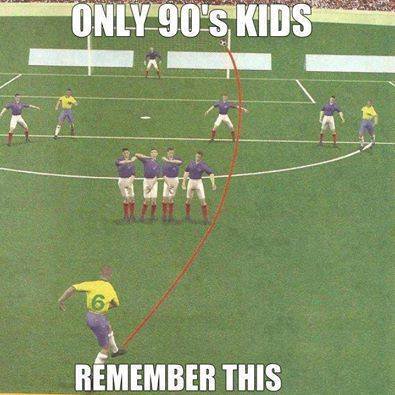
Photo: @lynsky_2 | Twitter
French goalkeeper Fabien Barthez had no chance, not even bothering with a courtesy dive as he could only watch the ball fly past him.
Fucking gorgeous.
These days it’s unthinkable that the world’s best player would leave Barcelona for Inter Milan, but that’s exactly what happened with Ronaldo on June 20, 1997.
After one season at Barcelona (in which Ronaldo scored 47 goals in 49 games), Inter Milan paid $27 million to snatch the goal-scoring machine, less than a month after the Barcelona president claimed Ronaldo was “ours for life.” It was the second straight year Ronaldo broke the world transfer record.
Long before he became Fat Ronaldo, “Il Fenômeno” was incredible in 1997. In 1996, at 20, he became the youngest player to win FIFA World Player of the Year and followed it up with a repeat in 1997. An unstoppable attacking threat, he would embarrass opponents, dribbling through defenders and then dancing around goalkeepers for extravagant goals.
And for those of you wondering how Ronaldo got the nickname "Il Fenômeno" at Milan, here you go.
One of the greatest — and most controversial — players in the history of the game called it quits on October 29, 1997, one day shy of his 37th birthday. Diego Maradona announced his retirement from the balcony of his home in Buenos Aires.
Maradona scored 259 goals at the club level and 34 more for Argentina throughout his career. He made his professional debut at the age of 15 in 1976.
Among all his highlights, his game against England in the 1986 World Cup will always been the most memorable, when he scored with the Hand of God and followed it up minutes later with the Goal of the Century.
Those who missed the early days of MLS missed the wizardry of Predrag Radosavljević — known simply as Preki.
The 1997 season was one of his best, being named the league MVP and finishing as the league scoring champion. He later repeated the feat in 2003, the only player to do the double twice.
Preki scored 12 goals to go with 17 assists (the same numbers he had in 2003) to dominate the MLS season.
Despite Preki’s abilities, D.C. United (with Jaime Moreno and Raúl Díaz Arce combining for 31 goals) won the Supporters’ Shield and MLS Cup, repeating as MLS champion.
Brazil was a powerhouse in the ’90s and showed off in 1997.
During the summer, Brazil dominated the Copa America hosted by Bolivia, winning all six of its matches with a plus-19 goal differential, including a 7-0 demolition of Peru in the semifinals. (Fun fact: Mexico’s Luis Hernández was the leading scorer of the 1997 Confederations Cup with six goals.)
In the Confederations Cup later that December, Brazil actually tied a match (0-0 vs. Australia), but made up for it by destroying that same Australian team 6-0 in the final.
With players like Ronaldo, Roberto Carlos, Romário and Leonardo in their prime, Brazil was nearly unstoppable.
Watching humans play soccer is great. Watching robots play soccer is greatest.
The RoboCup has been around for 20 years now and features, obviously, robots playing soccer.
The first RoboCup was played in 1997 in Japan, the same year IBM Deep Blue became the world champion in chess.
The robots have only improved since then. It’s only a matter of time before they completely take over.
Pelé was so brilliant, he was beloved far beyond the borders of Brazil.
In December of 1997, Edson Arantes do Nascimento was knighted by Queen Elizabeth II of the United Kingdom.
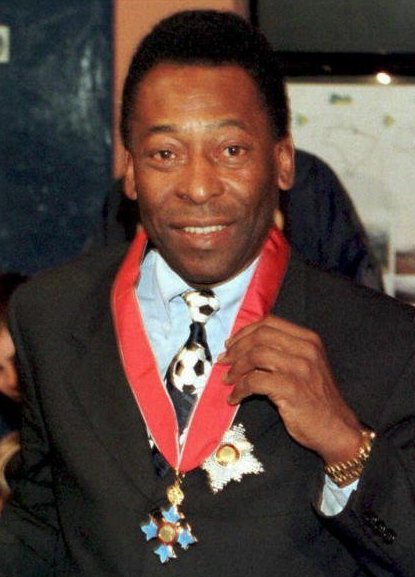
That's 'Sir Pelé' to you. Photo: @TeamFA | Twitter
Because he’s not British, Pelé’s knighthood was only honorary, but a fitting honor for one of the greatest of all time.


